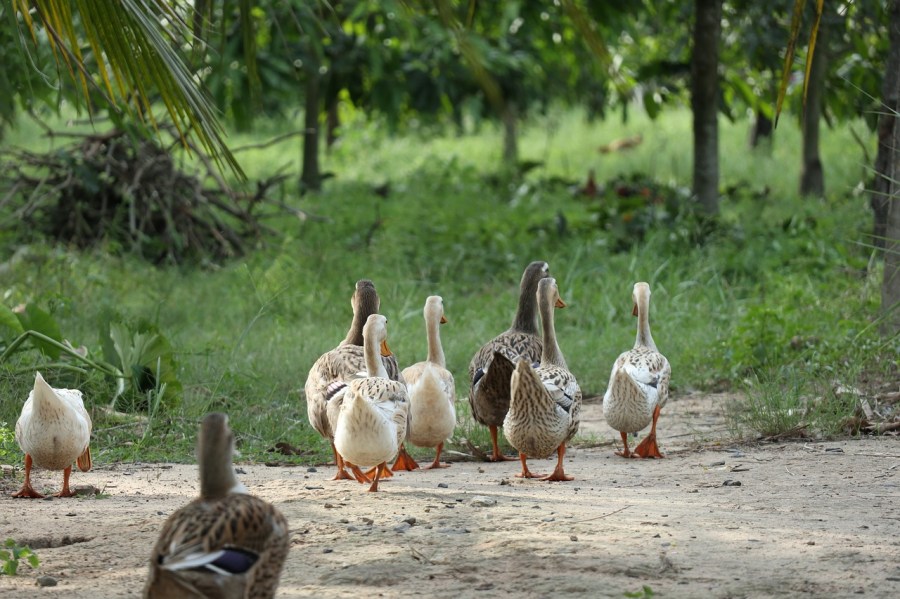How to Draw a Baby Chick How to Draw Duck

Waterfowl and other species of birds are often referred to by different names according to their groupings. Ducks are no different. Duck is a common name encompassing numerous species in the waterfowl family Anatidae, like swans and geese. The ducks are categorized into several subfamilies in the family Anatidae and don't represent a single common ancestral species. They instead form taxon, since swans and geese species aren't considered as ducks. The duck groups are most commonly known as a raft, paddling, team, flock, bunch, plump, skein, waddling, twack or sord.
Raft of Ducks
According to Lexico, a raft of ducks is a group of ducks gathered in large flocks on water. All ducks possess highly waterproof feathers due to an intricate feather structure and a waxy coating spread on each feather while preening. The duck's underlayer of feathers stays completely dry even when they dive underwater.
Paddling of Ducks
Lexicographers at Oxford Dictionaries define a paddling as a flock of swimming ducks. Ducks are both omnivorous and opportunistic eaters and can be found on land eating grass, insects, seeds and fruits. While on water, they can eat aquatic plants, fishes and crustaceans. A duck's specialized bill features a hard nail at the tip and a comb-like structure on the sides to help with foraging in mud and straining small insects and crustaceans from water.
Waddling of Ducks
A duck's walk is referred to as a waddle. For this reason, a waddling of ducks is a group of ducks walking with short steps and tilting their body from side to side. They're precocial, meaning that ducklings can walk and leave the nest a few hours after hatching. A hen (adult female duck) often leads her ducklings approximately half a mile or more over land immediately after hatching in search of a suitable water source for swimming and feeding.
During the construction of her nest, the hen surrounds it with soft down feathers plucked from her breast. This ensures the eggs have the best possible cushioning and insulation. Various duck species are monogamous for the breeding season but don't mate for life.
Plump/Dopping of Ducks
A plump or dopping of ducks is a group of diving ducks that sink their heads in water in search of food. They also like mixing their food with water to make it softer and easier to swallow. One of the myths surrounding ducks is that a duck's quack won't echo. A study conducted at the University of Salford proved this to be false. Most male ducks (drakes) are quiet, and very few actually quack. Instead, their calls involve squeaking, grunting, groaning, chirping and growling.
Skein of Ducks
Groups of ducks flying together are known as skeins. Some species of ducks tend to fly in V-shaped formation, especially when migrating. They're incredibly vulnerable during their molting season as the process stops them from flying. They can live five to 10 years in the wild and more than eight years in captivity.
Importance of Ducks
For more than five centuries, ducks have been domesticated as pets and farm animals and have various economic uses. Their underlying feathers are often used to design different products like bags, stuffing quilts and pillows. The white Peking duck is the most common species raised for eggs and meat.
MORE FROM REFERENCE.COM
How to Draw a Baby Chick How to Draw Duck
Source: https://www.reference.com/pets-animals/group-ducks-called-b01f5dc2e39a782b?utm_content=params%3Ao%3D740005%26ad%3DdirN%26qo%3DserpIndex
0 Response to "How to Draw a Baby Chick How to Draw Duck"
Post a Comment